Know Your Doors: Paneled Doors
Know Your Doors: Paneled Doors
Paneled doors, or stile and rail doors, are an advancement in design from plank doors and transitional doors that developed during the Renaissance era. In order to overcome wood’s natural tendency to shrink and expand, this construction method ingeniously allows the panel to move freely while the stiles and rails of the frame remain stable.
Paneled doors are more sophisticated in construction and require more skill to build. Its design refinements may include raised panels, profiled moldings, and solid or veneer woods with beautiful graining.
Characteristics of Paneled Doors
- Panels can be flat or raised
- Panels “float” inside a wood frame of stiles and rails
- Molding profiles vary for different architectural styles
- Vertical boards are known as stiles
- Horizontal boards are known as rails
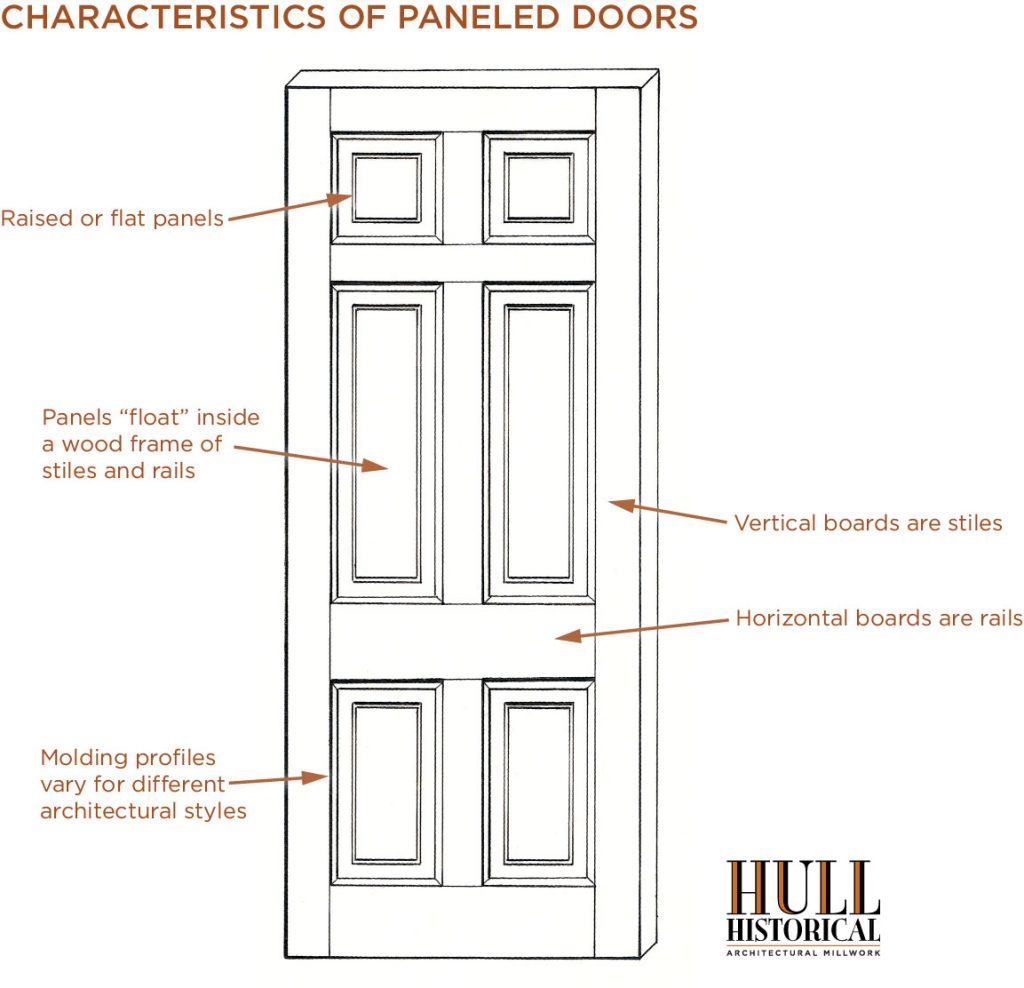
Panel Moldings
Not only do the shapes of the molding profiles vary, but how they are placed on the panel varies too. They sometimes sit flat on the panel with the square edge to the stile and rail. They sometimes also lip over the stile and rail before sitting on the panel with a notch (or rabbet) cut out. Finally, they are sometimes used as sunk molds, sitting below the face of the stile and rail. Each of these methods creates different appearances.

As you can see below, paneled doors are built historically with many variations; they have different numbers and shapes of panels and various shapes of molding profiles.
“A perfect Georgian mansion, at the peak of the period, is the Wentworth-Gardner House (1760) in Portsmouth, NH. It’s 15-paneled door is framed with rich Corinthian pilasters, surmounted by a scrolled pediment and crowned with a gilded pineapple, the symbol of hospitality.” From New England Doorways, Samuel Chamberlain, 1939
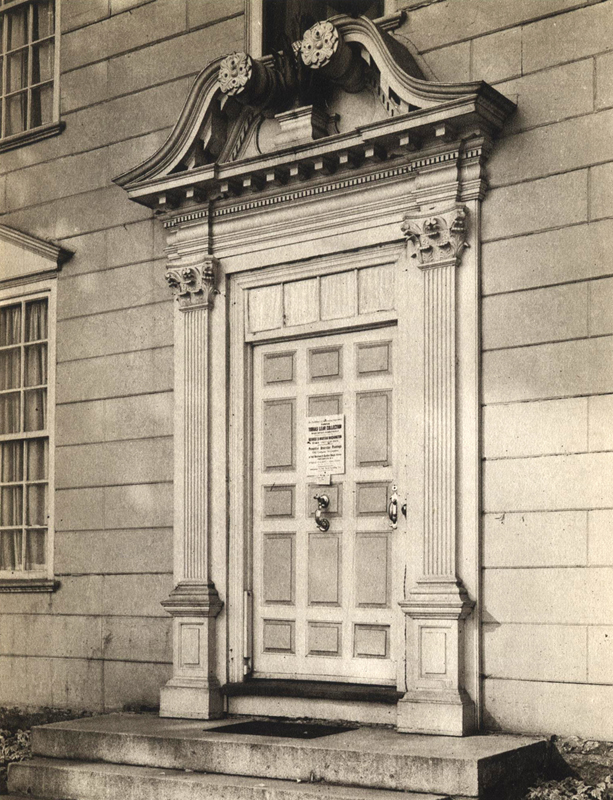
“The distinguished Storrs Parsonage on the broad green in Longmeadow, MA has an unusual elongated doorway with six transom lights, a central break in the entablature and round-headed panels in the pedestals.” From New England Doorways, Samuel Chamberlain, 1939
Above: Paneled door in Northford, CT. Note the rounded transom lights. From New England Doorways, Samuel Chamberlain, 1939

Above: A 6-panel Federal door with a unique panel mold and rosette details.
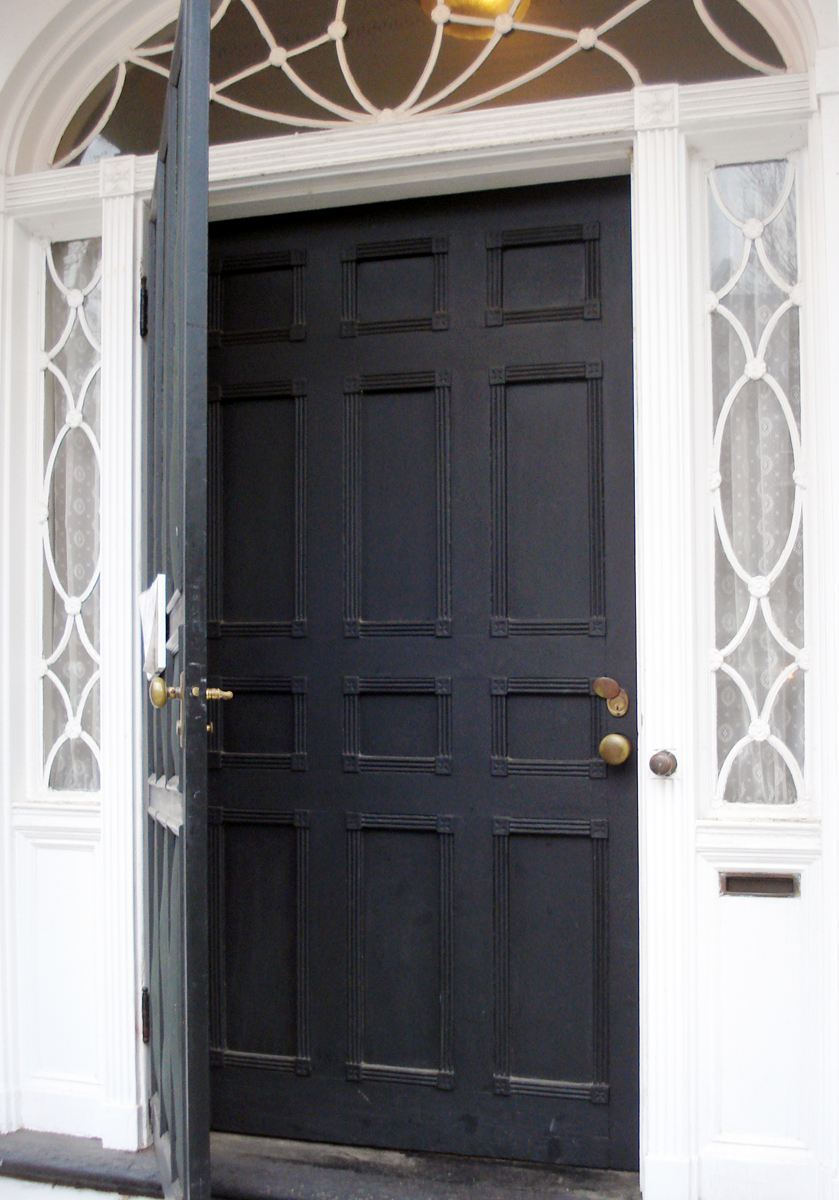
Above: 10-panel door with a handsome surround in Salem, MA.
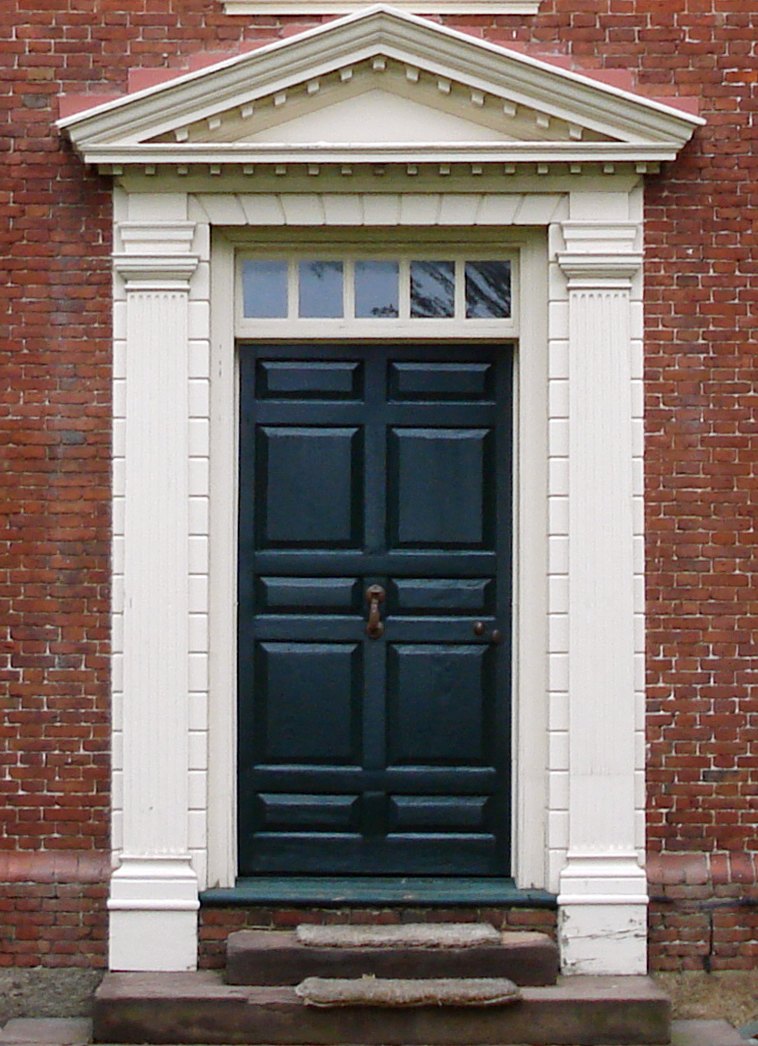
Above: 10-panel door with a handsome surround in Salem, MA.
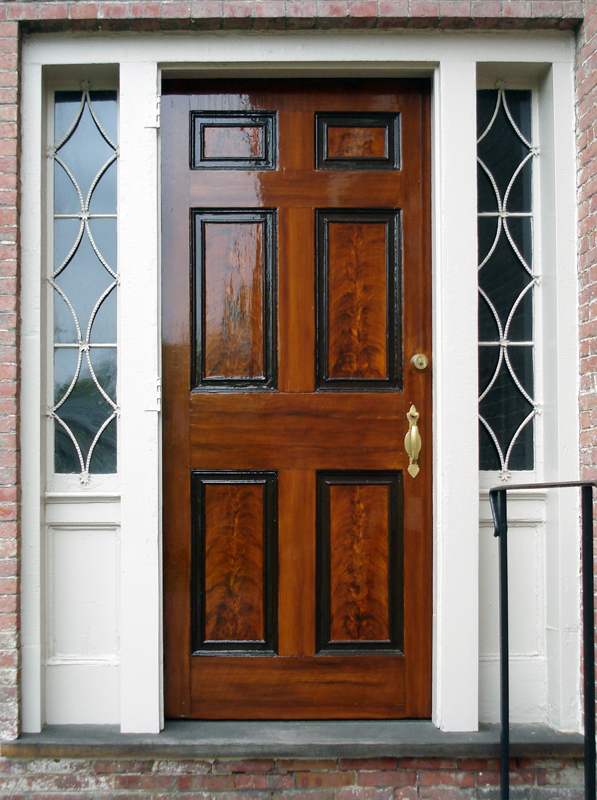
Above: 6-panel door with sidelights in Salem, MA.
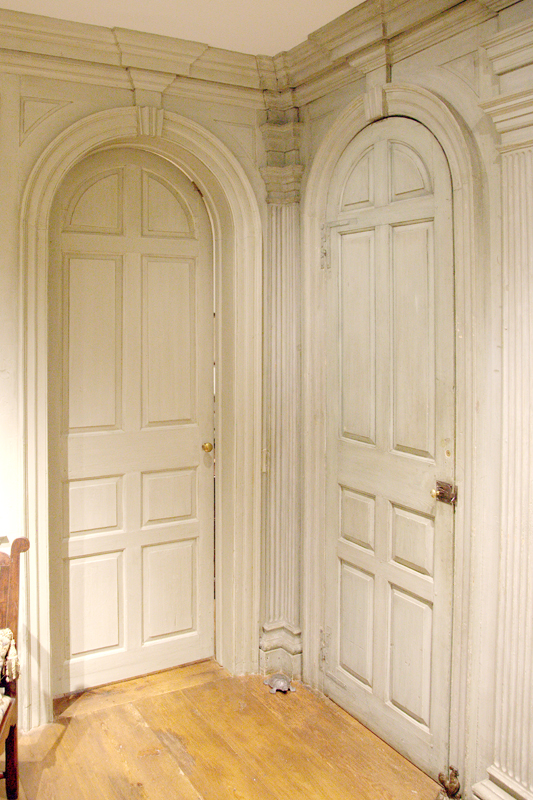
Above: Arched top 8-panel doors in the Cecil Bedroom at the Winterthur Museum, circa 1740.

Above: Double doors with diamond panels and diamond pane leaded glass, common in early English doors. By Hull Historical
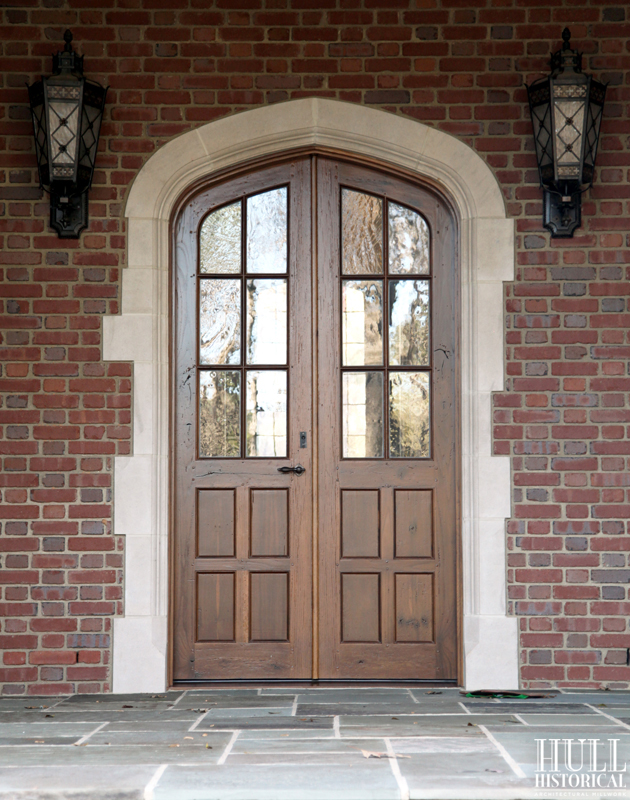
Above: Pair of English paneled doors in a 4-centered arch with antique glass. By Hull Historical
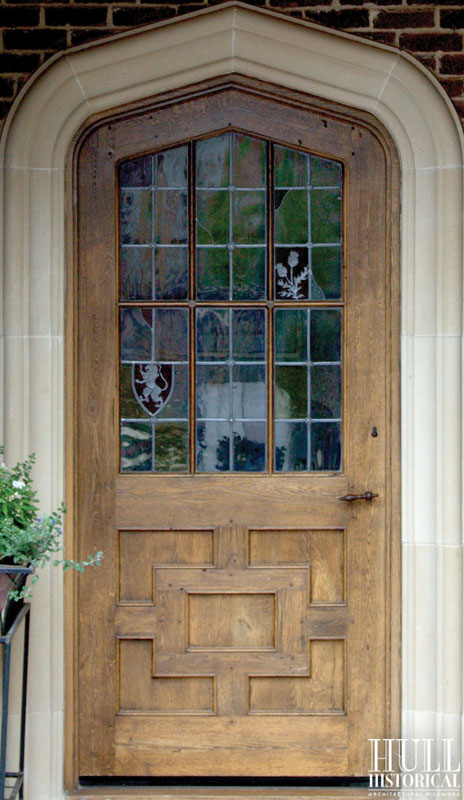
Above: A Jacobean style four-centered arch front door with upper lites and a a figured stile and rail paneling below, made of rift and quarter-sawn white oak. By Hull Historical
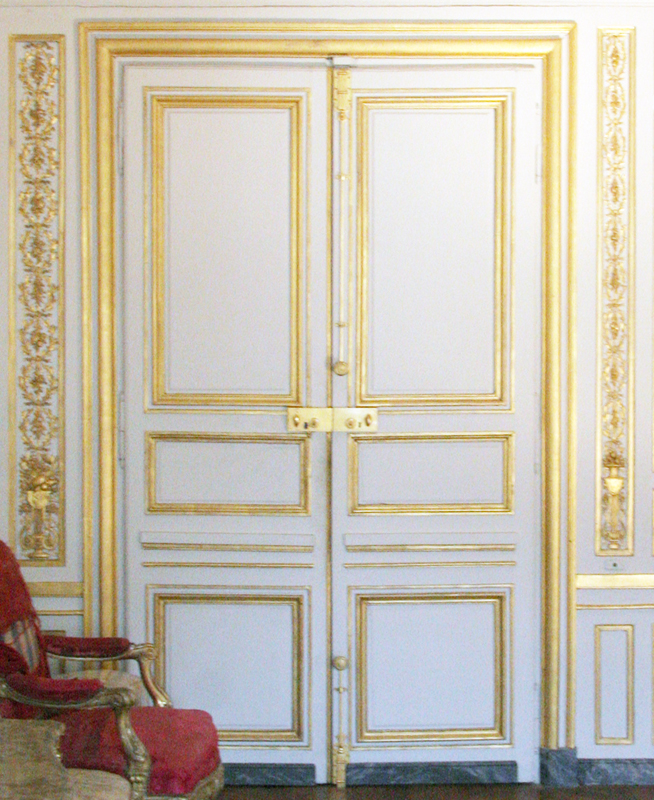
Above: 3-panel French doors from the Louis 16th period with gold leafing on the panel molds.
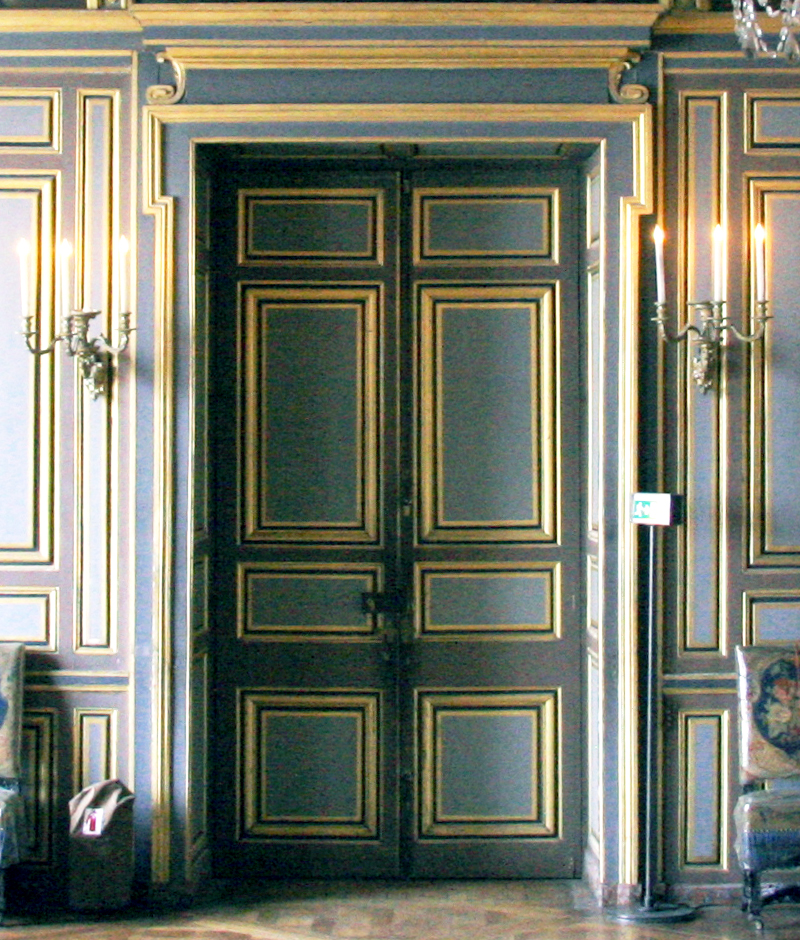
Above: 4-panel French double doors with painted gold leafing.
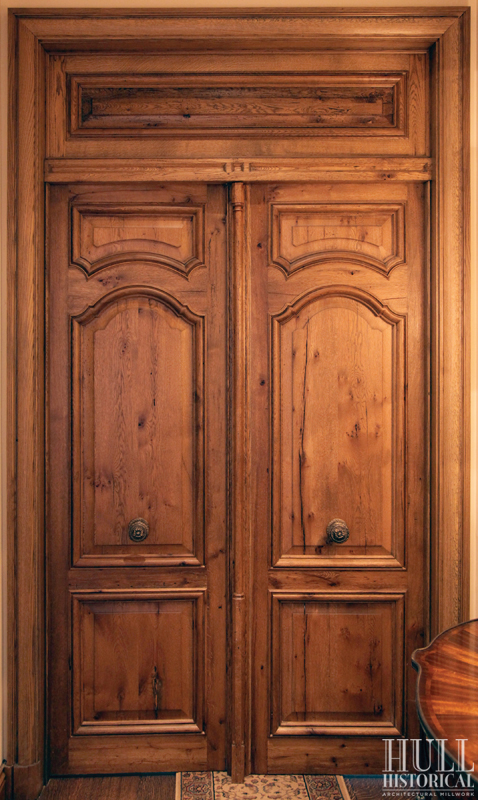
An elaborate entry door with a carved astragal and highly detailed panel moldings made from antique oak. Note the paneled transom above the pair of doors. By Hull Historical
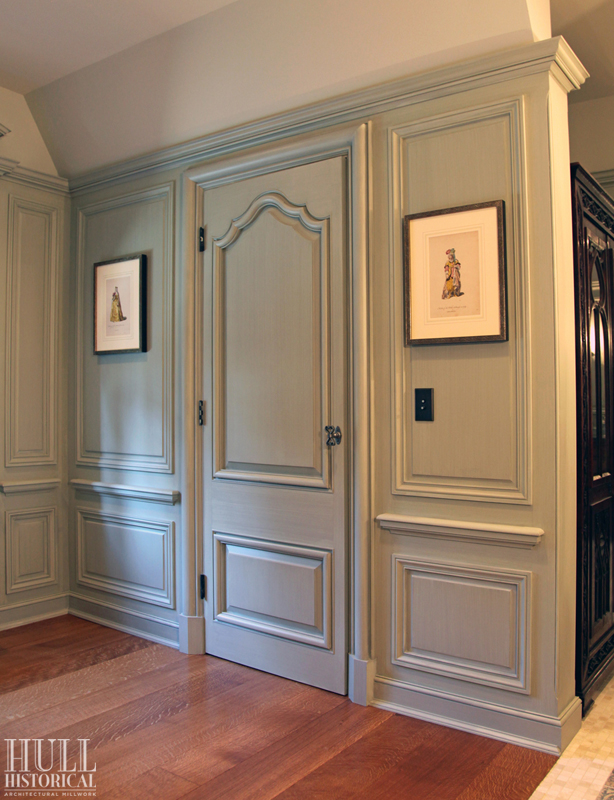
French two-panel door with a sculpted, ornate curved-top upper panel in a home’s master suite. By Hull Historical
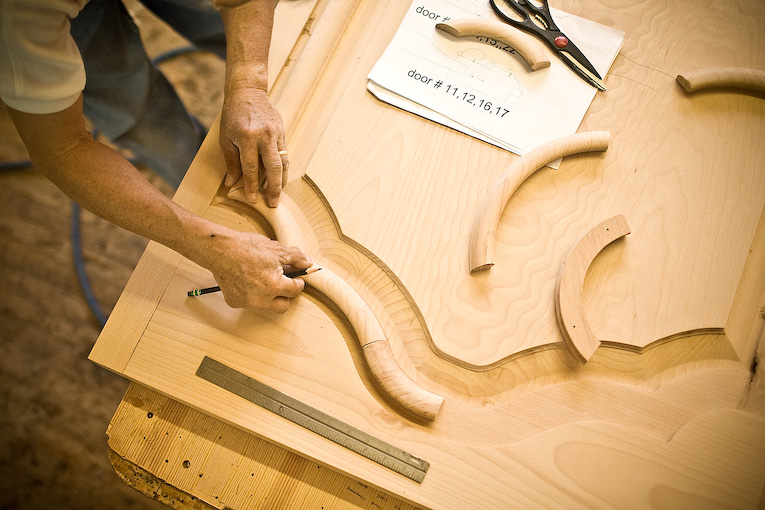
Above: The previous door during construction. The craftsman is adding the raised molding profile on the upper panel.
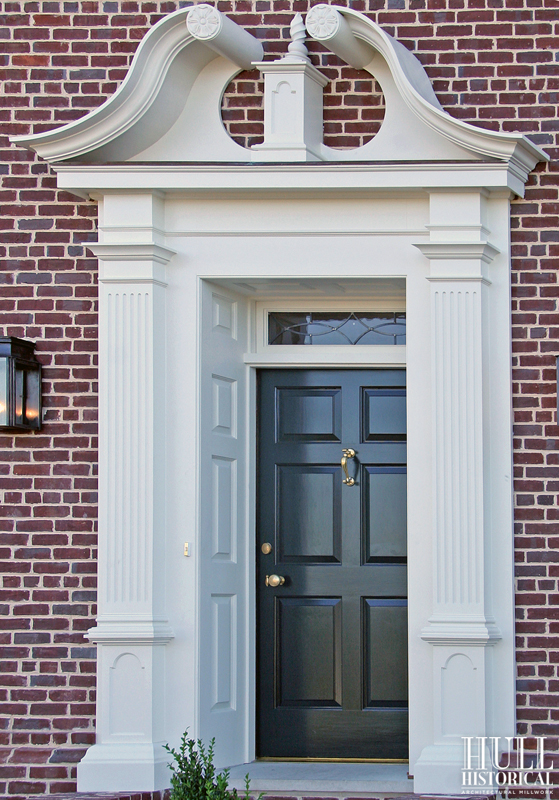
Georgian 6-panel door with a surround of pilasters on pedestals and a broken scrolled pediment. By Hull Historical
___________________________________________________________________________
At Hull Millwork, our singular team of master craftsmen excel in fabrication and installation of architectural elements for commercial, civic, historic, and residential projects. View our gallery of millwork projects or contact us today about your next project.

